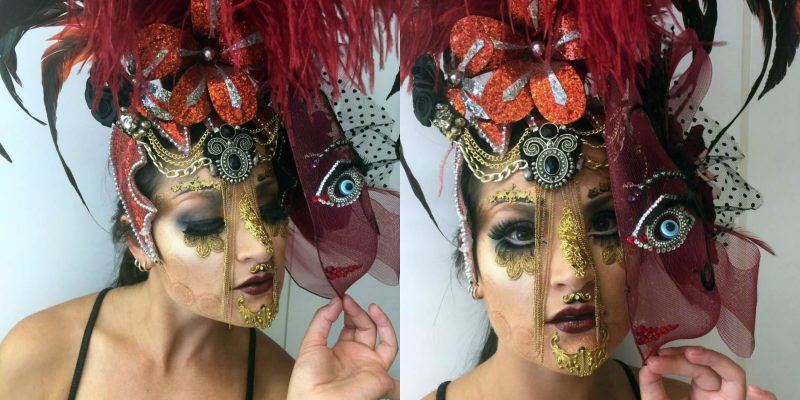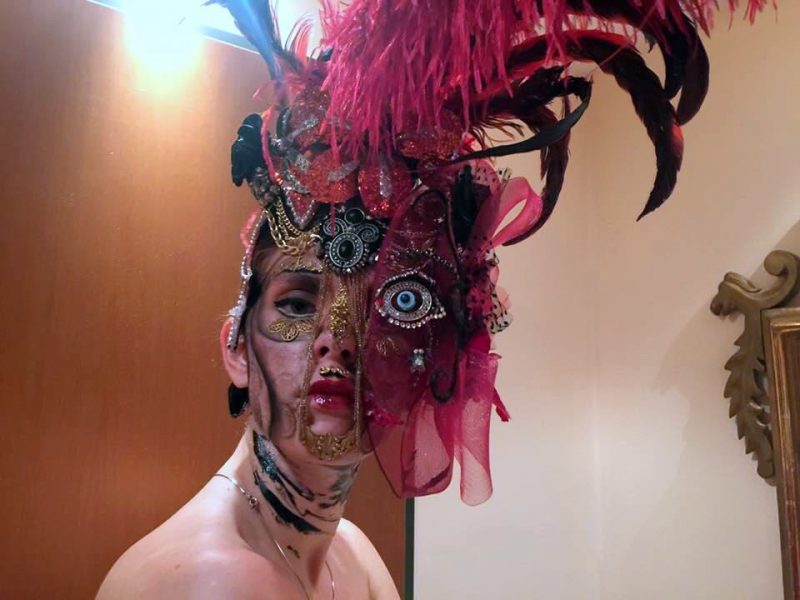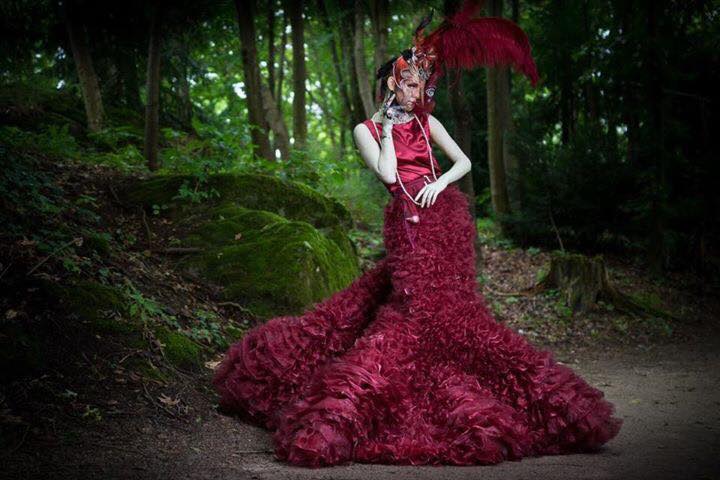When The Character Takes The Lead
The creative makeup competition in Austria in 2015 inspired me to create a special character to embody the competition’s chosen theme: the 1920s.
I chose to carry out the character of an actress at the time. For me, the 1920s evoke mainly images of the fashion of the day – clothes, makeup, women’s dreams, and the vivacious, bohemian lifestyle of the actresses, of which makeup was an integral part.
It was clear to me that my actress had to wear a fantastic dress. After choosing the cut of the dress, I decided to buy 70 yards of burgundy-colored nylon. Everything is urgent for me – I even took my busy model’s measurements in the middle of the street – and it’s all about ordering the fabric I want.
While sewing the dress, I kept looking for makeup options, reading about color, themes, style trends and directions, and trying, trying, trying.
The more the work on my character progressed, the more I realize she wanted to explore new directions. The character I created didn’t want to be held captive by the images of the 1920s, and while I was eager to see where she could lead me, I knew this was a competition with a defined theme, which was the 1920s.
“An actress can dare to be different,” I told myself in an effort to calm down, as I continued to fashion a fancy hat for her, with feathers and sparkles, a veil and rhinestones. Mounted on the veil was an eye made of Swarovski crystals with a special charm, a bead the shape of an oriental eye, to ward off evil, in its center. The veil was also adorned with lips and curly hair.

The veil will cover some of the face, even though the competition’s guidelines stipulated “no more than 20% of the face covered.” This is what my character demanded and it made me want to style her this way. And again I reassured myself that “the veil can be moved a little…”
In a toy store, I bought a plastic fly, painted its body with mother-of-pearl-colored varnish and put crystals on its wings. It shimmered and I was satisfied. I placed it on the veil and there – the hat with the fly was ready.
Now for the makeup itself: powder, naturally, and tons of it, then some golden seashell color and a blushing burgundy. At this point, I had no idea that in the competition itself, I would add turquoise shades into the burgundy, which would play off the blue in the eye on the veil beautifully.
Still, it felt off somehow. It wasn’t creative enough for me. This is how the idea to cover the whole face with lace pattern was born. I continued enthusiastically, placing strips of golden lace on the cheeks – golden lace I once used to design clothes – and I liked how it looked on the model’s face.

I connected with the character I created so much that I had forgotten all about the competition and its requirements – I was absorbed in my work and the process of creation.
At this point, I understood I was no longer competing, rather simply being an artist who created a character I really liked. I was ready to just show the character without a score.
Free to accept my personal version of a 1920s’ actress, I placed an earring the shape of a mustache under my model’s nose. But this hint fell short – I wanted to showcase bohemian life, when makeup was not meant to accentuate facial features but rather was roughly applied to change and blur them to the point of nearly marring a person’s appearance.
I hung a bag with black liquid latex behind the model’s ear and during the show, she clutched it, allowing the liquid to run down her neck and hands. She smeared the material, creating a sense of dirt, grime and fatigue in front of the audience.
Lora

I used four different models in the process of building this character. I couldn’t replace my Anya, who died three weeks before the competition. Thank you to each of my beloved models – Anjelica Losk, Yan Golovanevsky, Gudit Gola and Maria Ukrainets – you each played an important role in creating this work.




